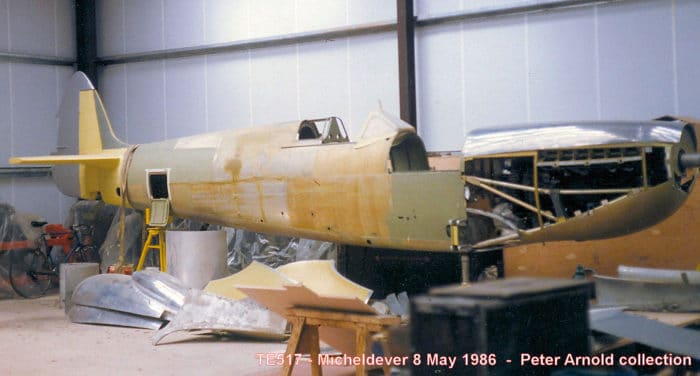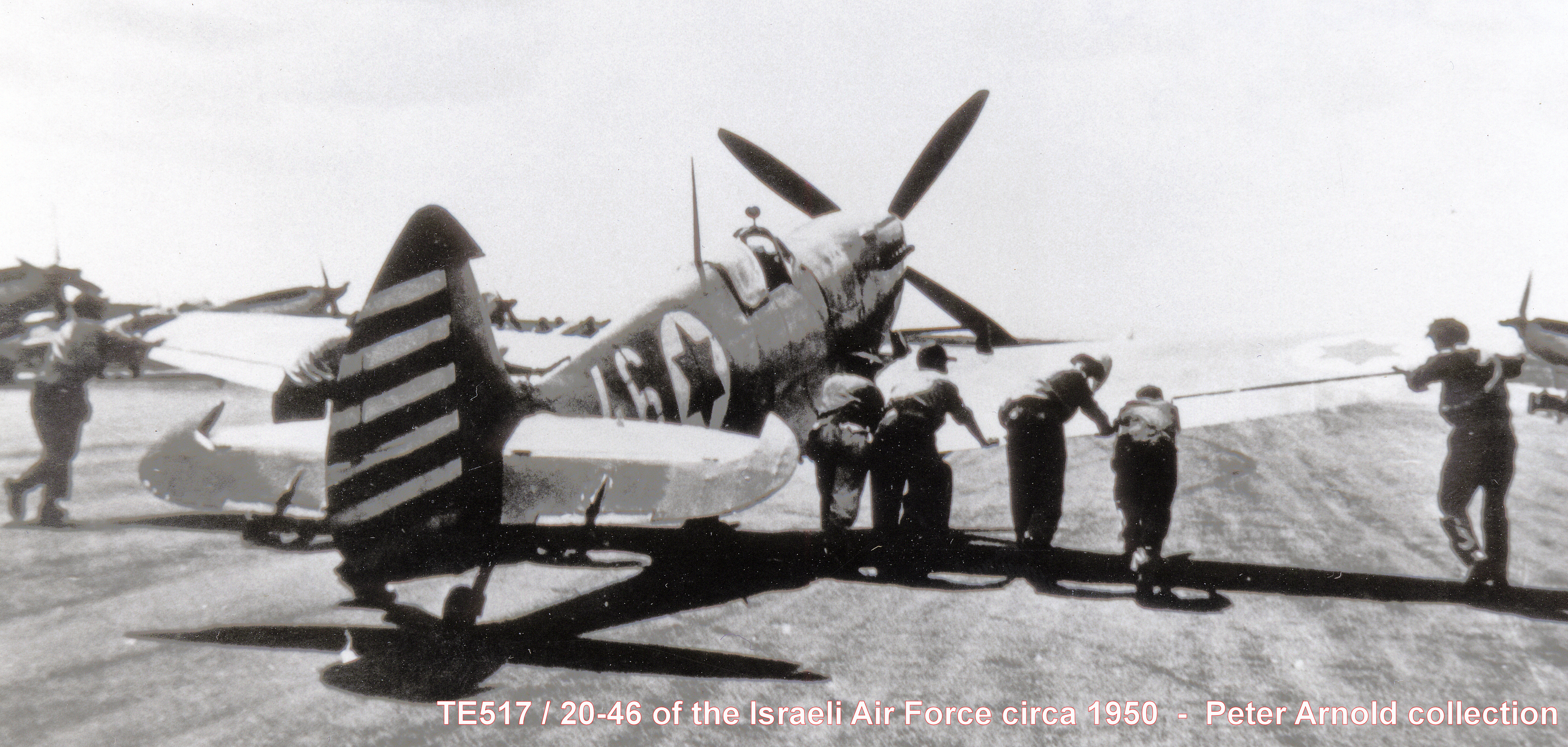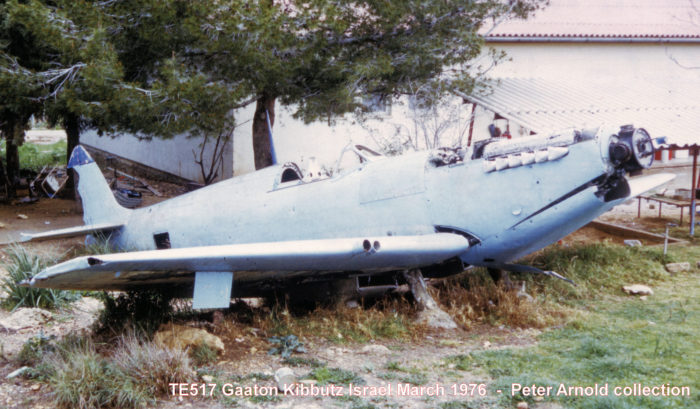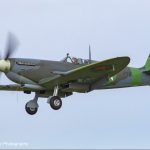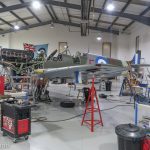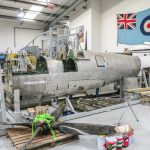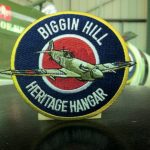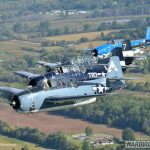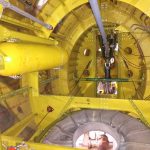As we have reported in the past, the Biggin Hill Heritage Hangar and its parent organization, The Spitfire Company (Biggin Hill) Ltd, have made remarkable progress in their work restoring Supermarine Spitfires at their facility on London Biggin Hill Airport, south east of London, England. This site is steeped in Spitfire history, being the former home of what once was RAF Biggin Hill, a major fighter base during the Battle of Britain. The company has worked on a dozen or so Spitfires since their inception, and has several on site at any given time, both airworthy and those under rebuild. Readers might recall the first flight last year of ‘The Greek Spitfire’, Spitfire Mk.IX MJ755, which is the last complete surviving example to have served in the Greek Air Force.
2021 will see a number of important restorations forthcoming as well, and this will include Spitfire LF Mk.IX TE517 which has returned to the Biggin Hill Heritage Hangar for airworthy restoration following a long period in storage.
Vickers-Armstrong built TE517 as part of a production batch of 1,884 examples under contract No. B 981687/39 for the Castle Bromwich Aeroplane Factory near Birmingham in the Midlands. These aircraft were made up of Mk.IX and Mk.XVI variants, with the principal differences between them being the engine choice (Mk.IX’s had the Rolls-Royce-built Merlin, while Mk.XVIs had the Packard). While main assembly took place at Cosford, the fuselage and wings came from sub-assembly shops located elsewhere around the country. TE517 first flew from Cosford during the spring of 1945. Fitted with a Rolls-Royce Merlin 66 engine, her first service assignment came in early June with No.33 Maintenance Unit at RAF Lyneham, about thirty miles due east of Bristol.
After a brief period at 33 MU, TE517 joined No.313 (Czech) Squadron on July 25th, 1945. The unit was based then at RAF Manston in Kent, and re-equipping with factory-fresh examples for transfer to Czecheslovakia. The squadron left for Czechoslovakia on August 7th, but bad weather held them up for several days in Hildesheim, Germany. They finally reached their destination in Prague, on August 13th. Her initial Czech assignment was with No.3 LD (Air Group) in Brno-Slatina, but she joined No.7 SLP (Fighter Regiment) in early February, 1946. TE517 didn’t remain in Czech service for long though, as they sold her on to the Israelis with several other examples in January, 1949.
TE517 arrived in Haifa, Israel in early February, 1949, moving a few weeks later to a maintenance unit at Ma’abarot, where she gained the new serial 20-46. The fighter served in both No.101 and No.105 Squadrons while with the Israelis until they finally struck her off charge in February, 1956. The Spitfire then flew into storage at Lydda. After languishing here for a period, she ended up as a child’s plaything on a kibbutz in Gaaten. It was on this kibbutz where noted pilot and aircraft collector Robs Lamplough found the Spitfire during the 1970s, still remarkably complete. He imported TE517, along with several other Spitfires, Mustangs and Hawker Hurricane Mk.IV KZ191 back to Britain soon after. TE517 arrived at Duxford in March 1977, and then moved to Charfield, Gloucestershire for restoration with the Bristol Plane Preservation Unit in February, 1978. Lamplough reserved the serial number G-BIXP for TE517 in 1981, but cancelled the registration in 1984 when he sold the project on to the late Charles Church.
Dick Melton took over the restoration on behalf of Charles Church (Spitfires) Ltd, working from his facility on Church’s estate in Hampshire. While they completed sheet metal repairs to her fuselage, TE517 donated her wings and engine to PT462, another Mk.IX which Lamplough had recovered in Isreal, albeit far less complete; PT462 was destined to become a two-seater. Sadly Church died in the crash of his Spitfire Mk.Vc in July, 1989, following which his significant aircraft collection was sold off. Kermit Weeks bought TE517’s fuselage at auction in 1992, and stored the airframe with Personal Plane Services at Booker-Wycombe Air Park, where the company was working on a number of Weeks’ other projects, however, Weeks eventually parted with the airframe, selling it to Paul Andrews in October, 2005. Andrews subsequently sold the airframe to Peter Monk in 2010 who stored her until just recently, when he moved TE517 to The Spitfire Company (BH) Ltd for a full restoration to flight at Biggin Hill. We look forwards to seeing her progress as the restoration moves along, with a hoped-for first flight in the next couple of years.
For those interested in seeing some of the fabulous work taking place at Biggin Hill described in greater detail, Channel 4, a British television network, released a six part series, Inside the Spitfire Factory last year, which provided a fascinating look at what is involved with restoring a Spitfire.
The Biggin Hill Heritage Hangar was founded in early 2011 to house the activities of The Spitfire Company (Biggin Hill) Limited, with the purpose of restoring a single Spitfire. From this the company has grown to the point where it now has a whole squadron’s worth of Spitfires, having completed its sixth airworthy example. At any one time, the hangar is a hive of activity with several ongoing restorations. In the past, up close access to Spitfires has been available to only a lucky few, but now you can take a tour round the facility and see at first hand what goes into putting a Spitfire back in the air, how they are maintained and what is involved in their day to day running. To learn more about The Heritage Hangar or to book a flight in a Spitfire, please visit flyaspitfire.com







